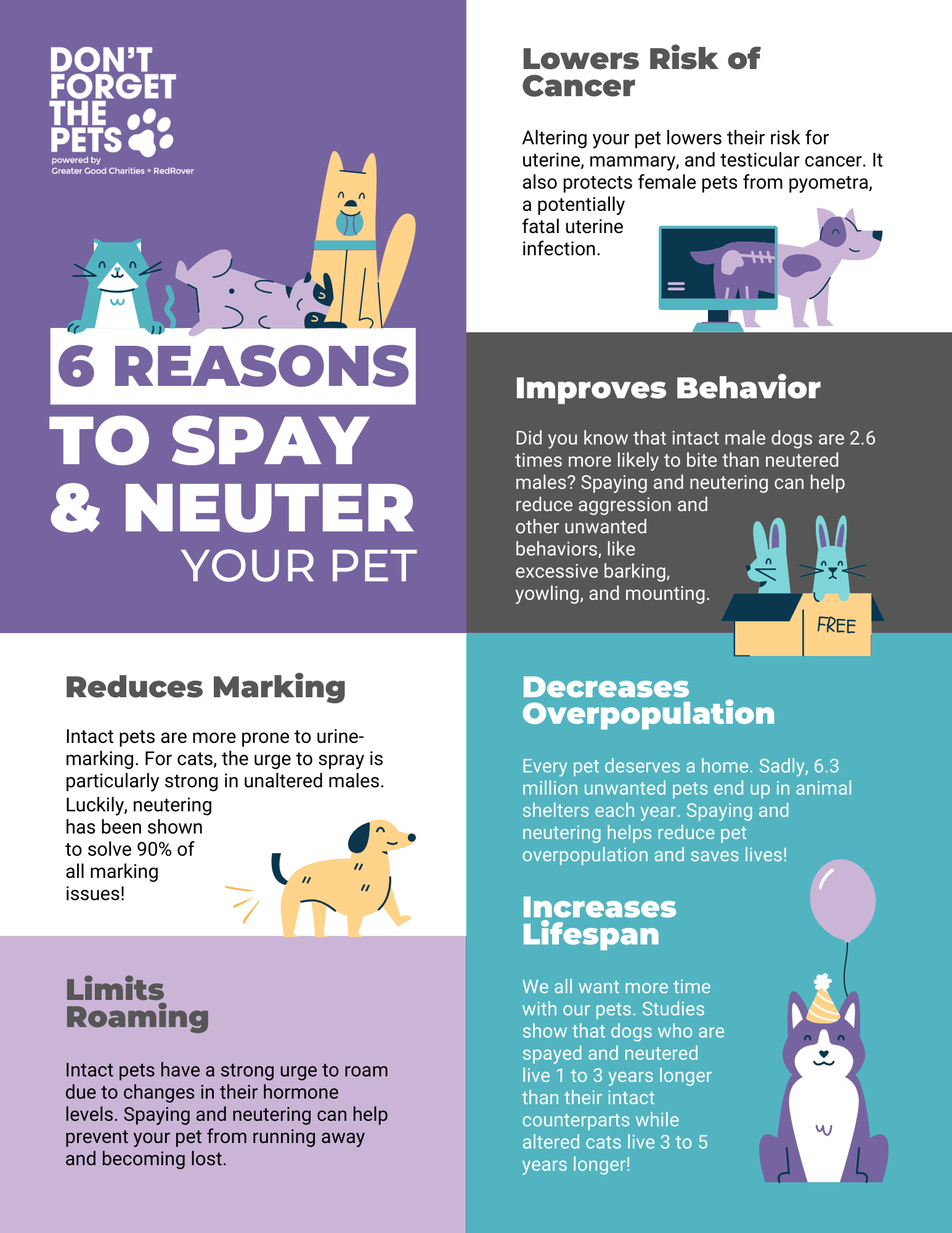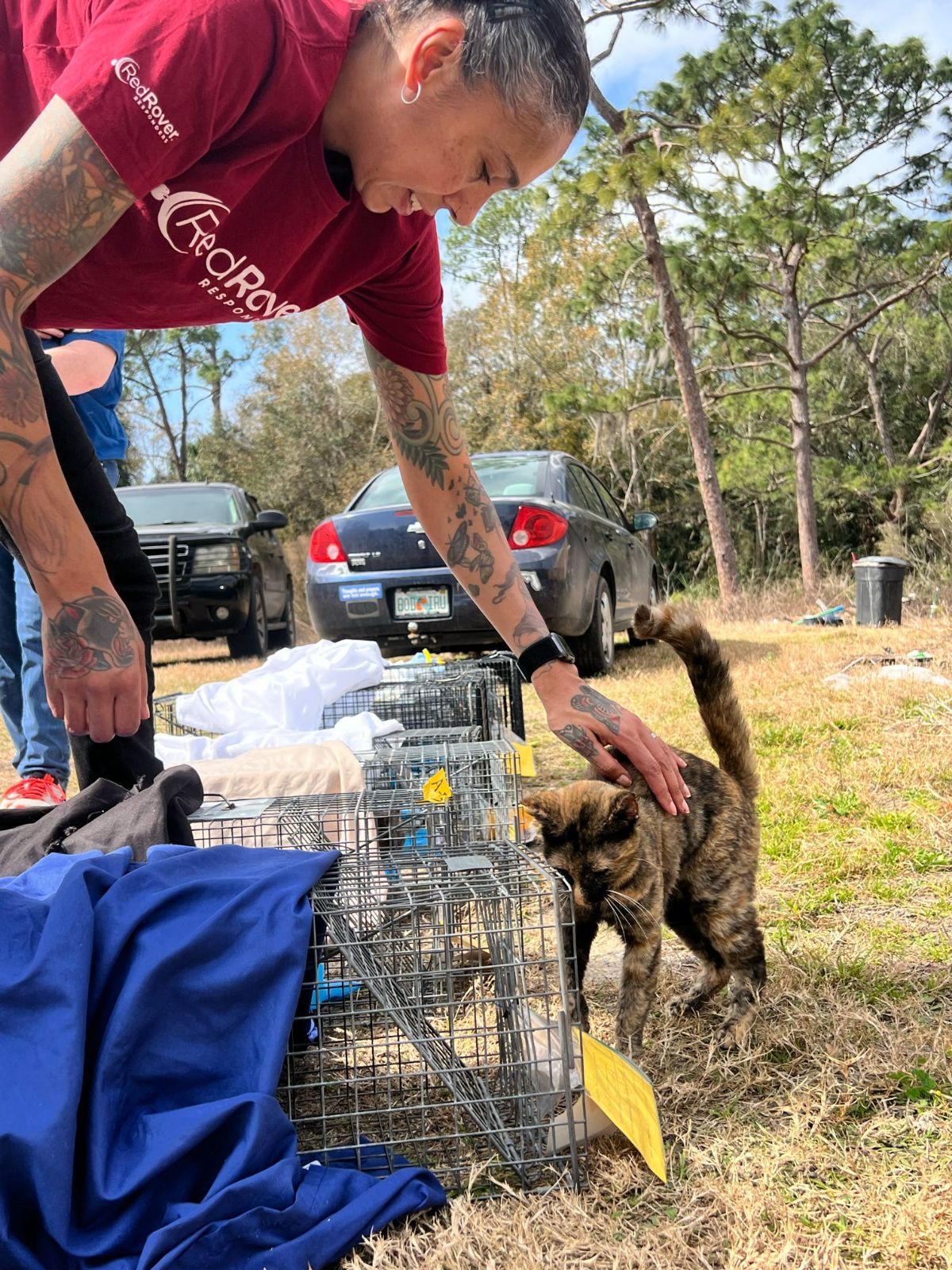Spaying and neutering are routine and effective procedures that support pets’ physical and behavioral health while helping to reduce overpopulation. In fact, the majority of states and many towns have enacted laws or passed ordinances requiring animal welfare organizations—such as shelters, rescues, and animal control agencies—to spay or neuter pets prior to adoption.
Mandatory spay/neuter legislation can also apply to privately owned pets within a community, regardless of where the pet was adopted or purchased. These laws place responsibility on the pet parent, who may face civil or criminal penalties for non-compliance.
A 2021 Faunalytics survey found that the majority of people support spaying and neutering. Eighty-one percent of respondents agreed that spay/neuter is important to control pet overpopulation, and 74% agreed that spaying/neutering “is the right thing to do.”
However, respondents largely felt that legal intervention was not the best method to ensure compliance. Seventy-one percent believed it should be up to the animal’s guardian whether pets are spayed or neutered. Only 38% agreed that requiring laws to enforce spay/neuter was a good idea, while 26% were “unsure.”
To find information about spay/neuter laws in your community, search your city or county’s official website for animal control ordinances, or contact your local shelters or animal welfare organizations
Why mandate spay and neuter?
Spaying and neutering are considered crucial for controlling the pet population and reducing the number of homeless animals. Overpopulation of companion animals, especially cats and dogs, remains a serious national issue.
Studies have shown that one unaltered female cat and her offspring can produce more than two million cats in eight years, and one unaltered female dog and her offspring can produce 67,000 dogs in six years.
Research also shows that spaying and neutering both companion animals and community animals (e.g., community cat colonies) reduces the number of animals entering shelters and decreases shelter euthanasia rates. With an estimated 1.5 million cats and dogs euthanized in the United States each year, reducing this number is a top priority for national animal nonprofits and community shelters.
In addition to addressing overpopulation, spay/neuter procedures provide significant health and behavioral benefits for pets, including:
Preventing unwanted pregnancies, reducing financial strain on pet parents and animal shelters.
Increasing pet lifespans: sterilized dogs live an average of 1.5 years longer than unsterilized dogs. A study by Banfield Pet Hospital found that spayed female cats live 39% longer and neutered male cats live 62% longer than unaltered cats.
Reducing risk of certain types of cancer: testicular cancer, prostate issues, mammary gland tumors, and ovarian and uterine cancers occur less frequently in altered pets.
Decreasing hormone-related aggression and other unwanted behaviors, such as yowling, restlessness, mounting, and spraying.
Reducing roaming, intact pets have a strong urge to roam and may escape their home in search of a mate. Altering pets reduces this behavior and lowers the risk of pets becoming lost or injured.

Why is there opposition to spay and neuter mandates?
Opponents of spay/neuter mandates argue that these laws infringe on pet parents’ ability to make medical decisions for their pets.
Currently, there is no credible evidence that mandatory spay/neuter laws specifically reduce shelter intake or euthanasia. In fact, such mandates may have the opposite effect, with more people relinquishing pets due to the cost of sterilization. For example, after Los Angeles passed mandatory spay/neuter laws for owned cats and dogs, shelter intakes and euthanasia increased significantly.

Jan, 2025. A RedRover volunteer pets one of 163 community cats altered during a TNR event in Florida.
Enforcement of these mandates, along with potential punishments for violations, varies widely. This inconsistency can confuse pet parents, animal organizations, veterinary providers, and humane law enforcement. It is also difficult to visually confirm sterilization status—particularly in female pets—making enforcement challenging.
Importantly, spay/neuter mandates do not address lack of access to veterinary services. Many pet parents already struggle to access care. Mandatory laws may create additional barriers, as some owners may avoid seeking services like vaccinations, wellness exams, or even emergency care out of fear of being fined for having an unsterilized pet.
As a result, numerous organizations oppose mandatory spay/neuter laws, including the American Veterinary Medical Association (AVMA), American Society for the Prevention of Cruelty to Animals (ASPCA), Humane World for Animals, American College of Theriogenologists (veterinary specialists in animal reproduction), Best Friends Animal Society, and the National Animal Interest Alliance.
Why might pet owners choose not to spay or neuter?
Hesitation often stems from affordability. Costs vary by pet size, age, and location, and additional tests or treatments can make the procedure even more expensive. Cultural beliefs, misconceptions about health risks or personality changes, and the desire to breed pets for profit or personal reasons also influence decisions.
Other barriers include lack of awareness about resources, language or transportation challenges, and fear of surgery. In underserved communities, access to veterinary care is especially limited. Humane World for Animals (formerly The Humane Society of the United States) found that while 91% of pets nationwide are sterilized, about 87% of pets in underserved neighborhoods are not. When support services such as financial assistance and transportation were offered, sterilization rates in those areas rose to 89%.
How can you support spaying and neutering in your community?
One of the most important ways to support clients is by offering clear, accessible information about spay and neuter procedures. Pet parents may feel overwhelmed or confused by conflicting opinions, so presenting the facts—including both the benefits and potential risks—can help them make informed decisions. Educational materials, whether provided in person, online, or in printed form, should use plain language and avoid jargon. When possible, offering resources in multiple languages helps ensure that pet parents from diverse backgrounds have the same access to reliable information.
Financial assistance is another key factor in supporting spay and neuter decisions. Many families who want to sterilize their pets simply cannot afford the upfront costs of surgery. Animal welfare organizations can help by creating a veterinary fund, partnering with local clinics, or working with national programs that provide reduced-cost surgeries or vouchers. Providing even partial financial support can be the difference between a pet receiving timely care or contributing to the cycle of overpopulation.
Beyond finances, addressing practical barriers like transportation is essential. In rural or underserved communities, families may live hours away from the nearest veterinary clinic, making access difficult even if cost is not an issue. Offering transportation assistance—whether through volunteer drivers, shuttle services, or mobile clinics—can remove one of the most significant hurdles for pet parents.
Finally, approaching these conversations with empathy is crucial. Some clients may be hesitant due to cultural beliefs, fear of surgery, or past experiences with veterinary care. Listening without judgment and acknowledging these concerns helps build trust. When pet parents feel respected and supported, they are more likely to follow through with spay and neuter procedures. By combining education, financial resources, practical assistance, and compassionate communication, animal welfare professionals can play a vital role in helping families make choices that benefit both their pets and the wider community.
Ketia Johnson is the Outreach Manager for RedRover. Prior to joining the Don’t Forget the Pets team, she earned her Master’s degree in Anthrozoology from Canisius College and spent over 8 years working in veterinary medicine at animal shelters.



